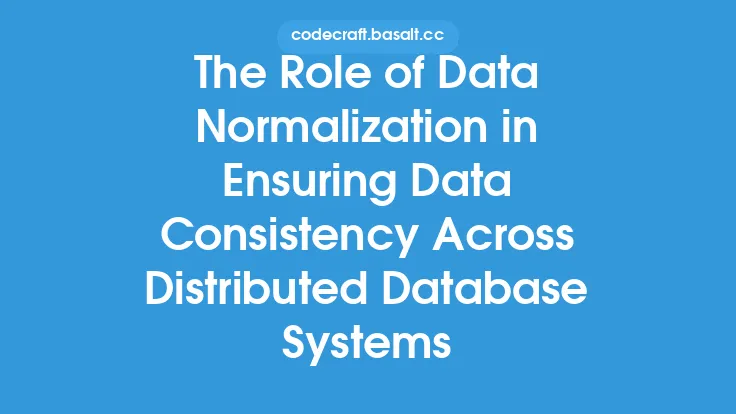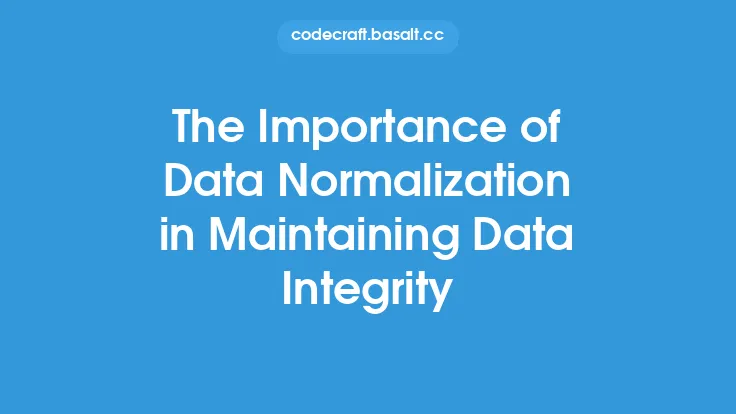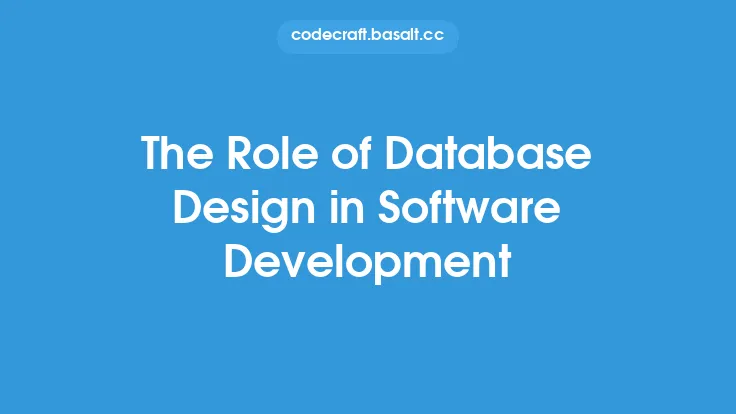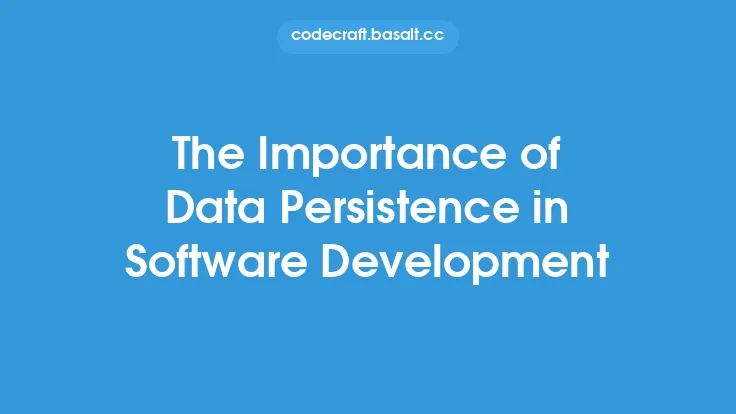Data modeling is a crucial aspect of database systems, playing a vital role in the design, development, and maintenance of databases. It involves creating a conceptual representation of the data, which helps to identify the relationships between different data entities, define the structure of the data, and ensure data consistency and integrity. In this article, we will delve into the importance of data modeling in database systems, exploring its benefits, techniques, and best practices.
Introduction to Data Modeling
Data modeling is a process that involves creating a visual representation of the data, using various techniques and notations, such as entity-relationship diagrams (ERDs), object-relational models, and dimensional modeling. The goal of data modeling is to create a clear and concise representation of the data, which can be used to communicate with stakeholders, identify data requirements, and design a database that meets the needs of the organization. A well-designed data model helps to ensure that the database is scalable, flexible, and maintainable, and that the data is accurate, consistent, and reliable.
Benefits of Data Modeling
Data modeling offers numerous benefits, including improved data integrity, reduced data redundancy, and enhanced data sharing and integration. By creating a clear and consistent representation of the data, data modeling helps to eliminate data inconsistencies and errors, which can lead to incorrect decisions and poor business outcomes. Additionally, data modeling enables organizations to identify data relationships and dependencies, which can help to improve data sharing and integration across different systems and applications. Furthermore, data modeling facilitates communication among stakeholders, including business users, developers, and database administrators, ensuring that everyone has a common understanding of the data and its requirements.
Data Modeling Techniques
There are several data modeling techniques, each with its own strengths and weaknesses. Entity-relationship modeling is a popular technique that involves identifying entities, attributes, and relationships between them. Object-relational modeling is another technique that combines the principles of object-oriented programming with relational database concepts. Dimensional modeling is a technique used for data warehousing and business intelligence applications, which involves creating a star or snowflake schema to support complex queries and analytics. Each technique has its own notation and syntax, and the choice of technique depends on the specific requirements of the project and the preferences of the data modeler.
Data Modeling Tools and Software
There are many data modeling tools and software available, ranging from simple and intuitive to complex and feature-rich. Some popular data modeling tools include Entity-Relationship Diagram (ERD) tools, such as ERwin and PowerDesigner, and object-relational mapping (ORM) tools, such as Hibernate and Entity Framework. Additionally, there are many open-source data modeling tools available, such as DbDesigner and SchemaSpy, which offer a range of features and functionalities. The choice of tool depends on the specific needs of the project, the size and complexity of the database, and the preferences of the data modeler.
Data Modeling Best Practices
To create an effective data model, it is essential to follow best practices, such as keeping the model simple and intuitive, using clear and consistent notation, and avoiding unnecessary complexity. Additionally, it is important to involve stakeholders in the data modeling process, to ensure that the model meets their needs and requirements. Furthermore, data modelers should use standardized terminology and notation, and follow established data modeling conventions and guidelines. By following these best practices, data modelers can create a high-quality data model that is easy to understand, maintain, and extend.
Data Modeling and Database Design
Data modeling is closely related to database design, as the data model serves as the basis for the database schema. A well-designed data model helps to ensure that the database is optimized for performance, scalability, and maintainability. Additionally, data modeling helps to identify data relationships and dependencies, which can inform the design of the database schema and the selection of database management system (DBMS) features, such as indexing and partitioning. By creating a clear and consistent data model, data modelers can help to ensure that the database is designed to meet the needs of the organization, and that the data is accurate, consistent, and reliable.
Conclusion
In conclusion, data modeling is a critical aspect of database systems, playing a vital role in the design, development, and maintenance of databases. By creating a conceptual representation of the data, data modeling helps to identify relationships between data entities, define the structure of the data, and ensure data consistency and integrity. By following best practices, using standardized notation and terminology, and involving stakeholders in the data modeling process, data modelers can create a high-quality data model that is easy to understand, maintain, and extend. As database systems continue to evolve and become increasingly complex, the importance of data modeling will only continue to grow, making it an essential skill for database professionals and developers.





